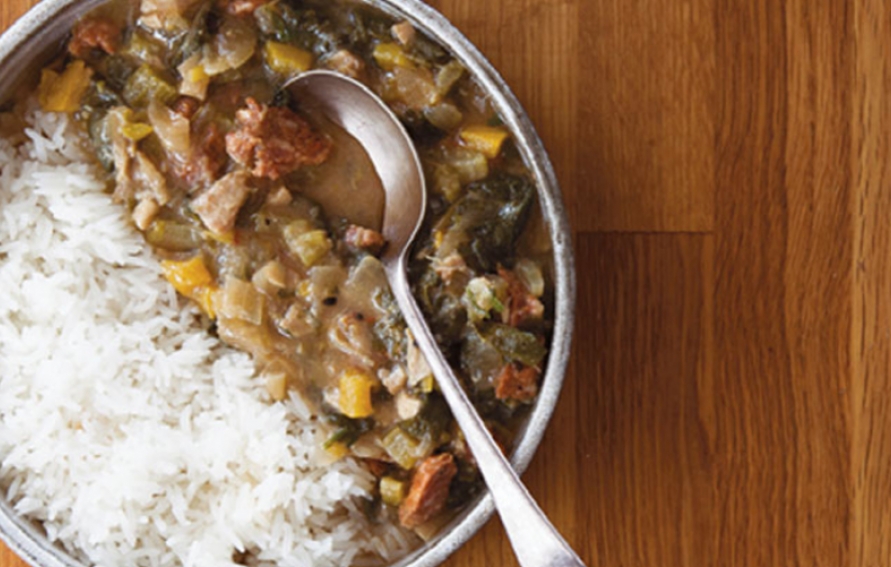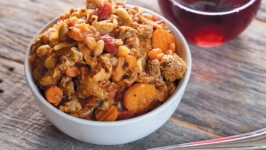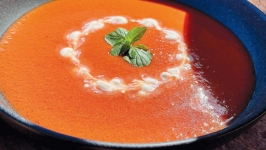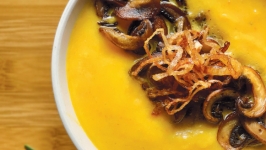Ingredients
- ⅓ cup vegetable oil
- ⅓ cup all-purpose flour
- 1 small white or yellow onion, diced
- 1 celery rib, diced
- 1 small bell pepper (any color), seeded and diced
- 3 cloves garlic, minced
- ½ small jalapeño, seeded and diced
- 1 andouille or Italian sausage link (mild or hot), casing removed
- 6 cups chopped braising greens
- ¾ cup chopped fresh celery leaves, flat-leaf parsley or chervil
- 3 bay leaves
- 4 cups chicken or turkey stock or vegetable broth
- 3 cups cooked and shredded chicken, turkey or pork shoulder
- 1 teaspoon salt
- Water (optional)
Preparation
In a 6-quart Dutch oven set over medium-low heat, warm the oil. Using a wooden spoon or silicone spatula, slowly stir in a little of the flour at a time to form a thick paste. (It will clump somewhat at first but thin out as you add more flour.) Cook, stirring, for about 25 minutes, until deep brown.
Stir in the onion, celery, bell pepper, garlic and jalapeño until the roux coats the vegetables. Cook, stirring regularly, for 5 minutes, until the onion is pale and the peppers are softening. Crumble in the sausage and cook an additional 7 minutes, stirring to brown the sausage on all sides. Add the greens, celery leaves and bay leaves, then slowly add the stock, stirring to wilt all the greens and mix them with the other ingredients. Cover the pot and cook for 1 hour, until the greens are soft but still brightly colored, then stir in the meat and salt. If the gumbo seems thicker than you want it, add enough water to thin it to your liking. Cook, uncovered, for 1 more hour, until the greens are completely tender and deep green.
Leftovers will keep in the fridge for up to 4 days or in the freezer for up to 6 months.
About this recipe
Excerpted with permission from Scraps, Peels, and Stems: Recipes and Tips for Rethinking Food Waste at Home (Skipstone, October 2018) by Jill Lightner.
To order, see mountaineers.org/books/books/scraps-peels-and-stems-recipes-and-tips-for-rethinking-food-wasteat-home.









